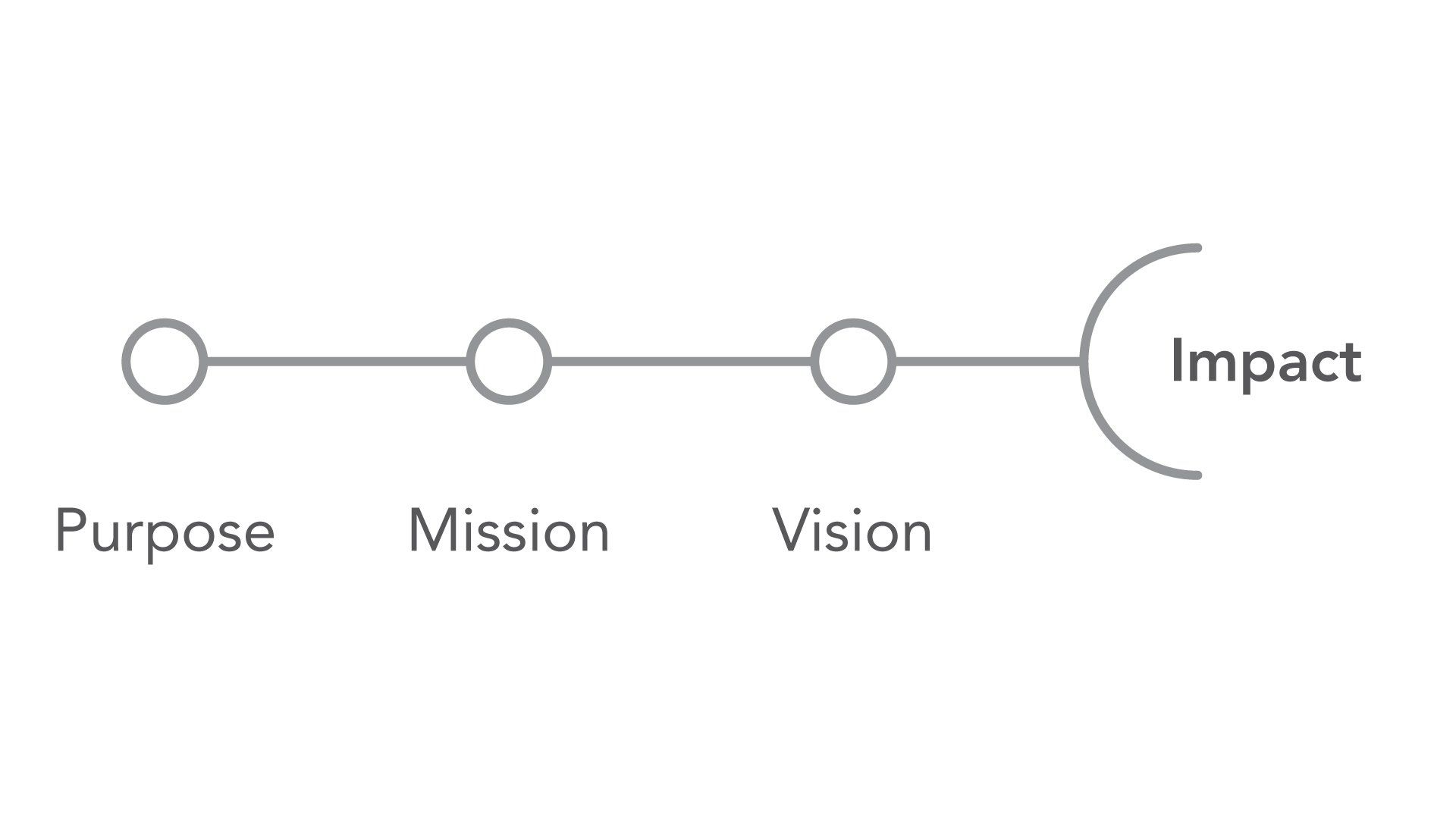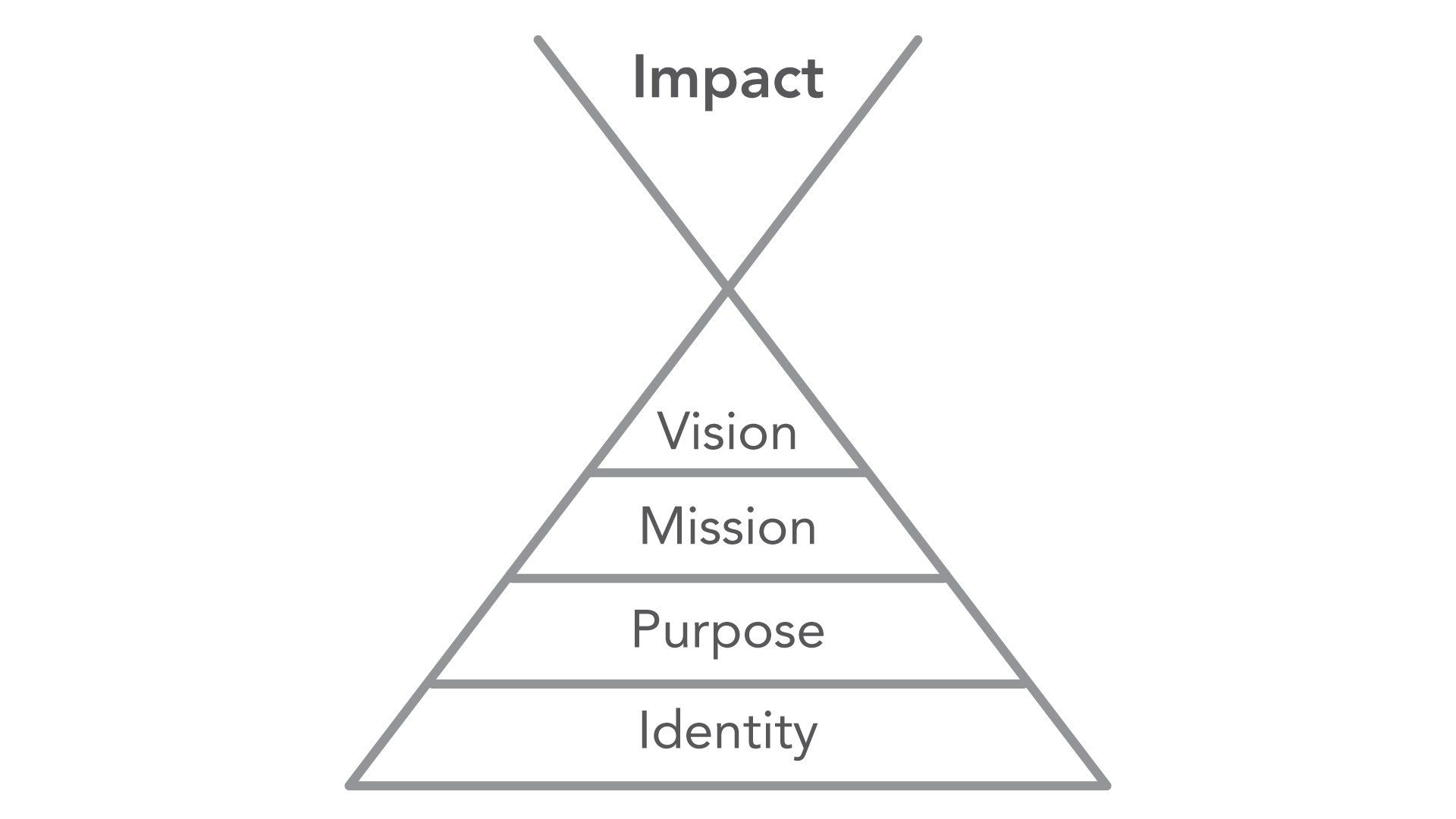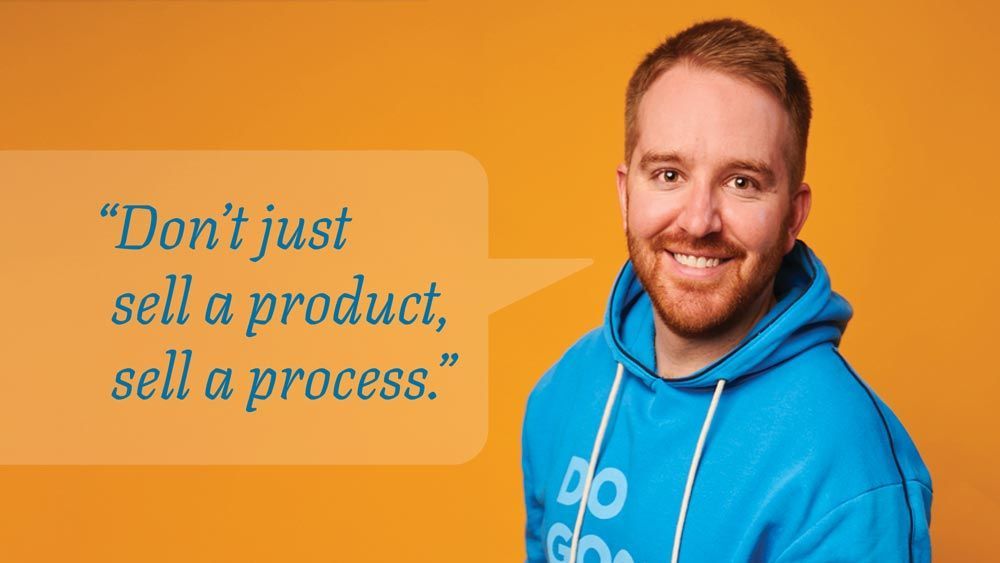The Difference Between Purpose, Mission, and Vision
If you want the people you serve and lead to embrace with your brand’s mission and impact, you need to be clear about who you are, what you do, why it matters, and where you’re headed.
What is the difference between purpose, mission, and vision?
I receive a daily email from In The Company of Prayer, with insights from business leaders on how their faith impacts their companies and business relationships.
An email from executive editor, Leslie Bianco, concluded with the following statements:
- WHY: We’re here to guide each other that one step further along a personal journey.
- WHAT: By revealing a Knowing Presence where you may not expect to find it.
- HOW: Through our Morning Briefing workday emails, book series, social media, conversations and personal interaction.
Do you recognize these three statements for what they are? Let's change out a couple of words:
- Why Purpose (The reason we exist in this context): We’re here to guide each other that one step further along a personal journey.
- What Vision (The goal of purpose): To reveal a Knowing Presence where you may not expect to find it.
- How Mission (The path to purpose and behaviors we follow): Through our Morning Briefing workday emails, book series, social media, conversations and personal interaction.
For most people, organizational purpose, mission, and vision statements are confusing. It’s rare to find two organizations that agree on common usage, definitions, and application of the concepts.
It can be even more confusing to understand why each word is relevant and how each component relates to one another. Some organizations tend to substitute their mission and vision for their purpose. If you want your audience to connect with your mission, you need to clearly communicate why, what, and how you are creating value and impact.
If you’re traveling, you begin at one point along a certain path and eventually arrive at your destination. You begin with the end in mind; you are guided by the reason you went on the journey (why), driven by the route you followed (how), and anticipating what you expected to find when you arrived.
Gary Burnison, CEO of Korn Ferry, says “Purpose precedes the first step. The more people embrace the purpose, the more likely they will follow — not only at the beginning when adrenaline is pumping and excitement is running high like at the start of a marathon, but later on when the going gets tough, and people question whether they can go another step.”
When you begin any journey, you subconsciously have an inner conversation around these four questions:
- “Why am I going to a particular destination?”
- “How will I get there?”
- “What will it be like when I arrive?”
- “Who will I see when I arrive?”
Without realizing it, you worked within a purpose-driven system.
Purpose focuses on four elements of impact:
- Why do you believe you can make a difference? — Purpose needs a reason.
- Who do you want to create impact for? — Purpose needs people.
- How do you achieve the impact? — Purpose needs a plan.
- What will impact look like when you achieve it? — Purpose needs vision.
Start with Purpose to Understand the Difference between Mission and Vision
Great brands don’t start with purpose.
They begin with focus: Who you are, what you do, and why it matters.
But without purpose, you’ll never stay focused.
A purpose is the reason your organization has begun a journey, guided by the deeply-held values and beliefs that inspire it to make a difference.
You organization’s purpose is the reason it exists beyond making money.
Your mission is the path your organization follows to arrive at its destination: When someone asks you where you are going, they ask you how you are going to get there. Your mission is the how: the unique way you do what you do, the path you choose to follow, the decisions you make to get to your destination.
Will you follow a focused and direct path; or one that wanders? A mission-driven path will be direct, and you’ll be accomplishing the things that matter that align your company goals with your purpose. That’s how you successfully and profitably get from where you are now to where you want to be and turn your vision for your business into reality.
Vision is your destination at a point in the near or distant future. Vision defines your goal and sets the expectation of what you’ll experience when you arrive at the destination. Your mission is your vision in action, connecting your purpose with your impact.
If you’re creating or evaluating your mission statement, consider substituting the words
Why,
How, and
What for
Purpose,
Mission, and
Vision. These substitutions will help you minimize any confusion between the terms and what they mean.
- Purpose guides you. Your purpose statement articulates why you do what you do, why your organization exists beyond making money.
- Mission drives you. Your mission statement is how you accomplish your purpose. Your mission is what drives you every day to fulfill your purpose. It's a direct path between your purpose and vision. Mission is doing what matters and eliminating the distractions; it activates the strategy that delivers results and impact.
- Vision is where you aspire to be. Your vision statement is what you will experience and achieve in the future, the results you are reaching for, the measurable impact you want to make. Your vision reminds you what the difference you make will look like and what change will happen. Vision aligns leaders and inspires followers. Vision keeps you on course, to fulfill your purpose.
- Impact is what matters: Goal-setting is the ongoing process of aligning your mission and vision with your purpose. What are the strategic goals that align with your purpose, and what are the measurable results of achieving your vision?
I owe some of that thinking to @briansooy
— David C. Baker (@davidcbaker) February 3, 2023
Is There Value in Having a Personal Purpose and Mission?
Now that you understand the difference between purpose and mission for your company, can you apply your understanding of the difference between vision, mission, and purpose to yourself and your team?
A company’s purpose, character, and culture create shared meaning for the organization, its brand, and for the people who choose to work there.
Leaders, when you lay out a larger vision and expect people to join you in the mission to achieve it, don't be surprised if they aren’t ready.
Given them time to grow into the new vision.
Think of a company’s character as the values and norms that make it likable and meaningful. Those values and norms are the unbreakable threads of company culture that guide how it conducts business and treats people.
The CEO of Vitamix, Jodi Berg, conducted three research studies to understand the difference between people who are purpose-driven and people who are goal-driven. When employees asked, “Do I have the opportunity to live with purpose through the work that I do?”, she studied how an organizational purpose and an employee’s personal purpose affect their performance.
Her research helped her understand why it’s critical to make personal purpose a critical factor in attracting, hiring, and retaining the right talent:
“One of our guiding principles is to find people that passionately believe in making the world a better place. It’s one of the most important values—because if you don't truly believe in making the world a better place—then you may choose to make decisions that aren’t necessarily making the world a better place.”
The Difference Between Mission and Vision
Great brands don’t start with purpose.
Great brands begin with focus and alignment: Who you are, what you do, and why it matters.
Without a vision, you’ll never stay focused. Without purpose, your brand will not stay on mission.
A mission statement and vision statement are best suited for internal organizational guidance. Purpose keeps you focused on why you exist, vision aligns you with your goal, and mission empowers how you will accomplish it. Done well, it will inspire and motivate you every day, and just might inspire your audience.
To inspire your employees, focus on a purpose that articulates why your brand matters and why your brand is meaningful to other people. Open up to who you are, what you do, and why it matters (why your brand or business matters is the hard part).
Communicate and practice your values, revealing the character that guides your culture. Your audience will connect more deeply with the higher purpose, character, and vision of your organization, than with even the most effective mission statement.
Your company’s values and purpose are best shared through a compelling narrative and stories, not your mission statement.
An organizational one-liner or story pitch is an excellent starting point for equipping your team with the words they need to stay motivated and inspire people to act.
When your audience knows why your organization matters, they will know if your cause is meaningful. When a supporter connects with your purpose, they will believe in your mission. When they all align, you will achieve greater impact for the cause you care about. Purpose is the foundation of mission and vision, but impact is what matters.
Listen to what your audience says about themselves and your brand: “Tell me what you believe. Inspire me in a way that speaks to my mind, and touches my heart. Point me to a higher calling that gives me meaning and connects my heart with yours.”
“Through your culture – your character in action — inspire me with the values that guide how you interact and communicate with me. Make me part of your community that is working for the greater good.”
“Then I will be inspired, and I will follow.”
- Follow In The Company of Prayer and receive a brief email to start your day.
- Understand and activate the difference between purpose, mission, and vision in Raise Your Voice: A Cause Manifesto.
Purpose Publications
Putting Purpose Into Practice: The Economics of Mutuality. “The essence of modern economics and management is a battle for purpose in a world of rapidly increasing complexity and confusion. Not just having a purpose, but making that purpose real at every level of the organization.”
Brian Sooy is the first Level C Certified Brand Strategist and StoryBrand Certified Guide. Brian leads the Aespire branding agency and authors books and thought leadership to help leaders find clarity, focus teams, align culture, build brands, multiply impact, and build thriving businesses.
Thanks to these websites and writers for spreading our ideas
- We discovered remarkable similarity between this article by Brian Sooy (written in 2013) and the key points and conclusions in a 2020 article from the Center for Agile Leadership.
- This "Finding Your Purpose" mini-workshop deftly incorporates the main ideas from this article, and kindly links an image of Simon Sinek's framework to this website.
Do you have a hard time explaining what your company does or why your brand matters to people?
If you struggle to grow your business, you’re not alone. Aespire can help you create a clear message and brand that helps you grow your business. Contact us today for a consultation with a StoryBrand Certified Marketing Guide.
Get a Free Comprehensive Marketing Assessment
Stop hoping your marketing will sort itself out.
- Complete this free assessment in 15 minutes.
- Review your custom report (and schedule a 30-minute review) to diagnose what’s happening.
- Create an action plan to get your marketing back on track.










